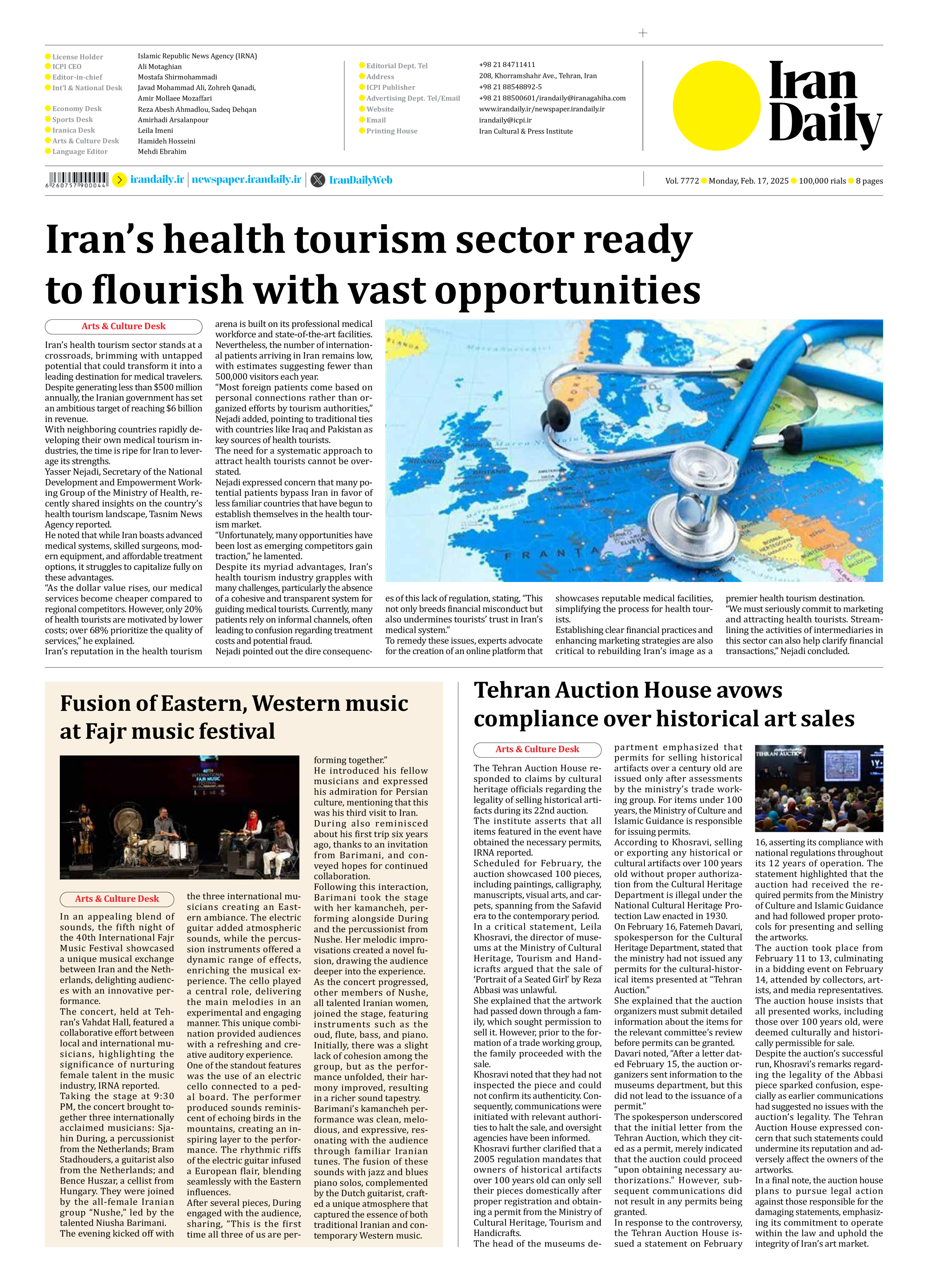
Tehran Auction House avows compliance over historical art sales
The Tehran Auction House responded to claims by cultural heritage officials regarding the legality of selling historical artifacts during its 22nd auction.
The institute asserts that all items featured in the event have obtained the necessary permits, IRNA reported.
Scheduled for February, the auction showcased 100 pieces, including paintings, calligraphy, manuscripts, visual arts, and carpets, spanning from the Safavid era to the contemporary period.
In a critical statement, Leila Khosravi, the director of museums at the Ministry of Cultural Heritage, Tourism and Handicrafts argued that the sale of ‘Portrait of a Seated Girl’ by Reza Abbasi was unlawful.
She explained that the artwork had passed down through a family, which sought permission to sell it. However, prior to the formation of a trade working group, the family proceeded with the sale.
Khosravi noted that they had not inspected the piece and could not confirm its authenticity. Consequently, communications were initiated with relevant authorities to halt the sale, and oversight agencies have been informed.
Khosravi further clarified that a 2005 regulation mandates that owners of historical artifacts over 100 years old can only sell their pieces domestically after proper registration and obtaining a permit from the Ministry of Cultural Heritage, Tourism and Handicrafts.
The head of the museums department emphasized that permits for selling historical artifacts over a century old are issued only after assessments by the ministry’s trade working group. For items under 100 years, the Ministry of Culture and Islamic Guidance is responsible for issuing permits.
According to Khosravi, selling or exporting any historical or cultural artifacts over 100 years old without proper authorization from the Cultural Heritage Department is illegal under the National Cultural Heritage Protection Law enacted in 1930.
On February 16, Fatemeh Davari, spokesperson for the Cultural Heritage Department, stated that the ministry had not issued any permits for the cultural-historical items presented at “Tehran Auction.”
She explained that the auction organizers must submit detailed information about the items for the relevant committee’s review before permits can be granted.
Davari noted, “After a letter dated February 15, the auction organizers sent information to the museums department, but this did not lead to the issuance of a permit.”
The spokesperson underscored that the initial letter from the Tehran Auction, which they cited as a permit, merely indicated that the auction could proceed “upon obtaining necessary authorizations.” However, subsequent communications did not result in any permits being granted.
In response to the controversy, the Tehran Auction House issued a statement on February 16, asserting its compliance with national regulations throughout its 12 years of operation. The statement highlighted that the auction had received the required permits from the Ministry of Culture and Islamic Guidance and had followed proper protocols for presenting and selling the artworks.
The auction took place from February 11 to 13, culminating in a bidding event on February 14, attended by collectors, artists, and media representatives. The auction house insists that all presented works, including those over 100 years old, were deemed culturally and historically permissible for sale.
Despite the auction’s successful run, Khosravi’s remarks regarding the legality of the Abbasi piece sparked confusion, especially as earlier communications had suggested no issues with the auction’s legality. The Tehran Auction House expressed concern that such statements could undermine its reputation and adversely affect the owners of the artworks.
In a final note, the auction house plans to pursue legal action against those responsible for the damaging statements, emphasizing its commitment to operate within the law and uphold the integrity of Iran’s art market.







